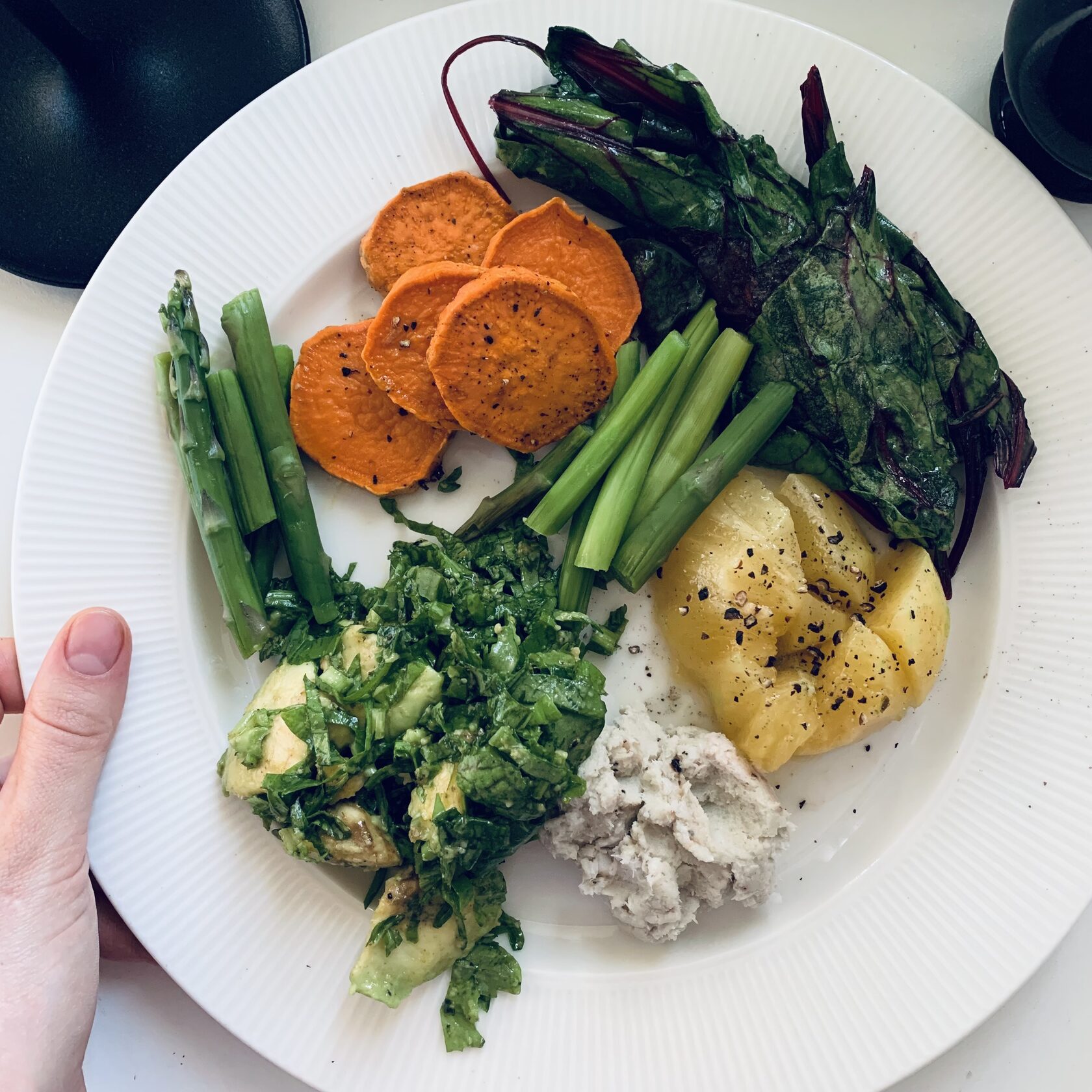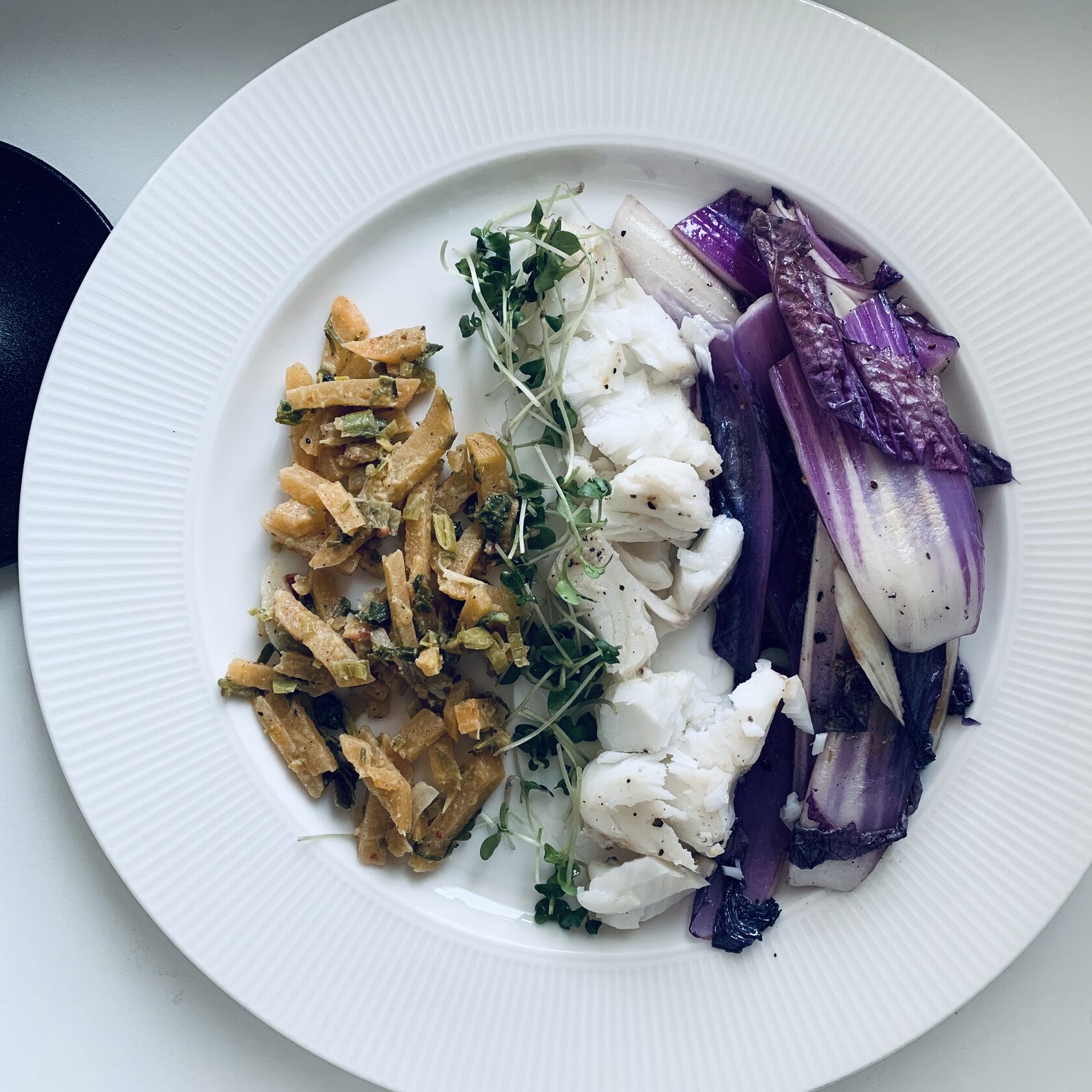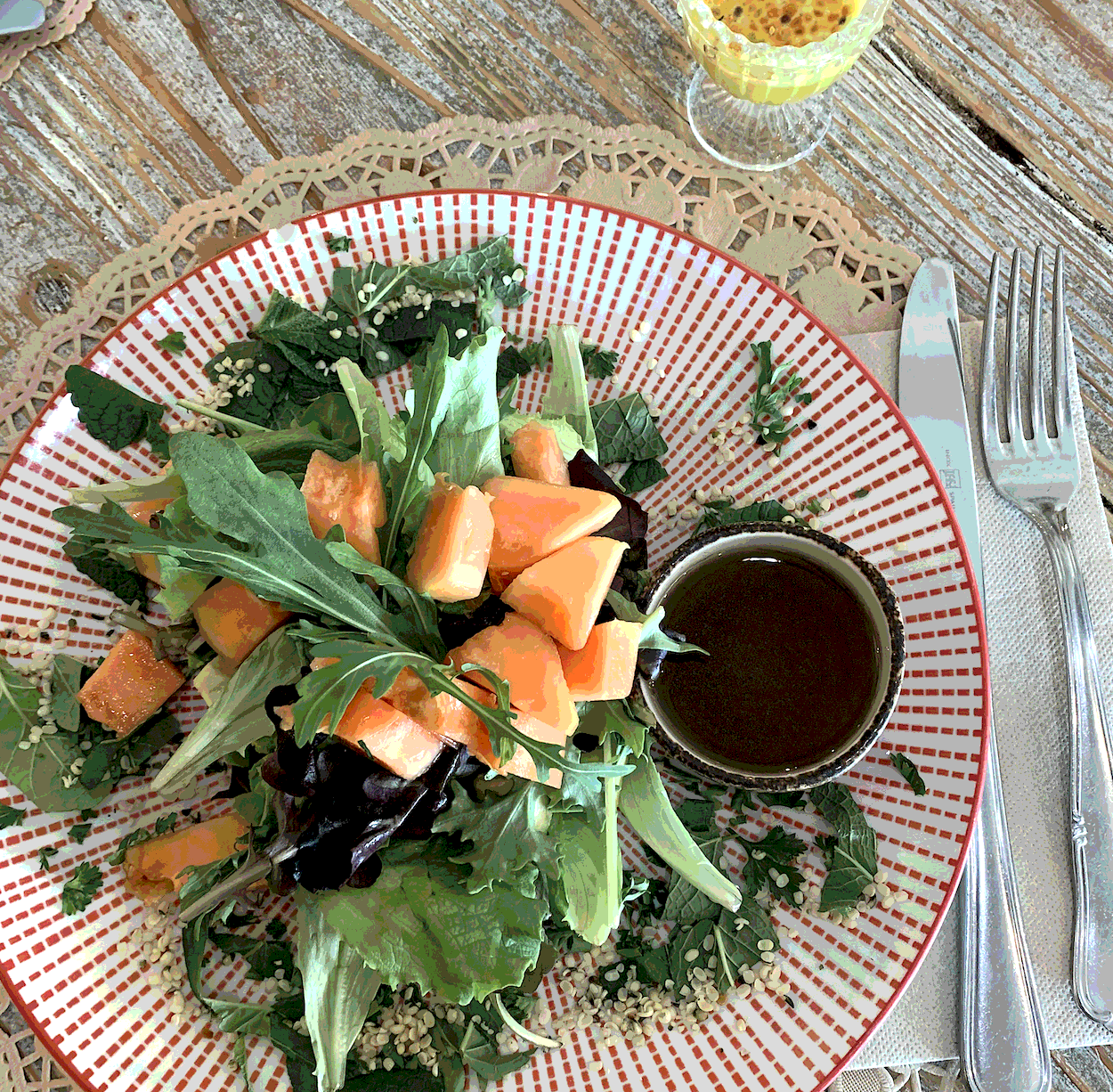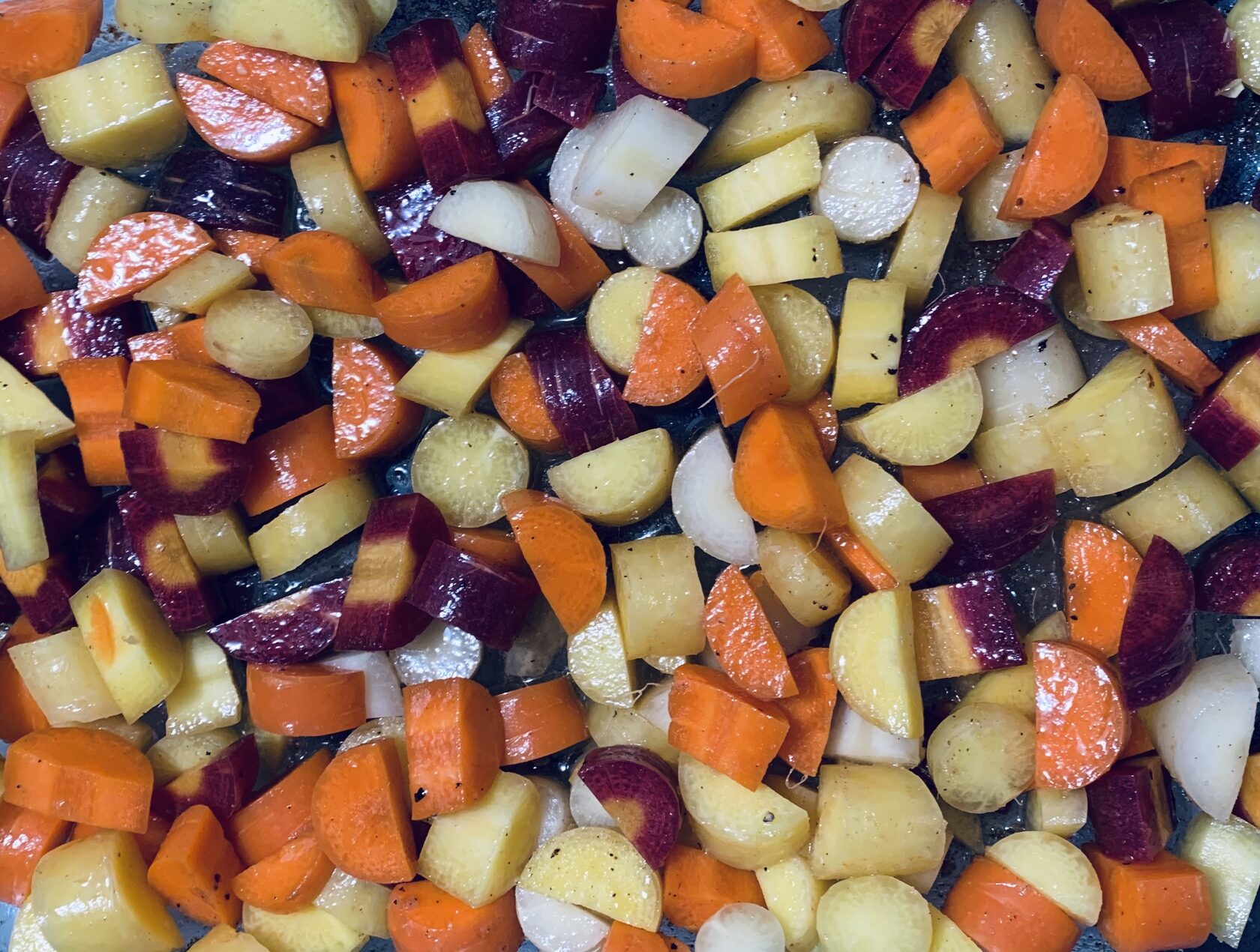The purpose of this article is to give even more practical tips for cooking vegetables, so that it will be easier and more fun for you to keep introducing all the vegetable diversity into your diet.This time, we're going to focus on the color component, which means eating vegetables in all the colors of the rainbow. Let me remind you that this is really important because of the availability of phytonutrients, which can be obtained in the easiest way - by selecting different vegetables, herbs, berries, fruits for your diet. Getting phytonutrients from food, on the other hand, is critical to our health and the optimal functioning of all of our vital systems.
We do not want to miss such a great chance to improve our health through food, do we?)
So, let's break down what color vegetables are important to include in your diet, and then let's describe how to prepare them.
Choose vegetables of different colors and, of course, considering your tolerance, for example:
red - tomatoes, bell peppers, red onions and cabbage, raspberries, red currants and strawberries
green - all possible green leafy vegetables, olives, asparagus, all herbs, zucchini, cruciferous vegetables.
yellow - onions, pumpkins, zucchini, tomatoes, bell peppers, sweet potatoes, apples, white currants, and raspberries (if you can find them at local markets:)
orange - pumpkin, yams, bell peppers, tomatoes, papaya.
purple (the rarest!) - plums, beets, onions, potatoes and sweet potatoes, purple herbs, blueberries, eggplants, cabbage (cabbage and kohlrabi).

There are many more vegetables than I listed above - make it a rule to find new options every week!
Fast processing in the form of stir-frying:
- It's important to use sauté pan or wok with a quality coating (stainless steel, cast iron)
- fry in avocado/coconut oil/Ghee
- add ground spices at the end (one minute before removing from the heat)
- add garlic and ginger at the beginning (simmer in oil for the first 15-30 seconds)
- fry on a hot frying pan for 2-3 minutes until al dente - do not brown too much and ensure there are no browned "crusts".
- to minimize time of cooking for the vegetables, you can cut them in julienne strips or in small pieces (e.g. green beans or asparagus should not be added whole, but cut lengthwise into two halves)

Blanching
- Option of blanching with boiling water, very quickly - up to one minute.
- A good alternative for soups and purees in order to preserve the maximum nutritional value of the food
- After blanching, the vegetables and greens can be covered and left for 10 minutes so that they are "cooked through" and then added to a salad or used as a side dish
- Use your favorite spices and oils to create flavor you like

Steaming
- any greens can be prepared this way if cold raw salads are not very comfortable for you yet (if there are some problems with digestion)
- to make vegetables and greens fragrant - add fresh herbs (rosemary), essential oils (intended for food) or spices to the water
- steaming should also not be too long (we wnat bright green colour).
- after cooking, add extra virgin oils (olive, nut or seed oil) for a better flavor
Stewed vegetables
- in order not to overcook vegetables and to preserve maximum nutrients it is recommended to cut them into smaller pieces.
- begin by frying the ginger and garlic and a couple of your favorite spices (for example, cumin and cardamom) and then add the vegetables.
- you can add nuts and even some sun-dried (without sugar) fruits to this dish right at the beginning of cooking (this is the best way to further digest it and to keep your blood sugar level stable)
- during cooking, you can add coconut milk and, for example, curry spices to get a special flavor
- at the very end of cooking, add a generous portion of fresh herbs (cilantro, parsley, basil)

Puree soup (well, can't beat that:)
- the easiest way to cook with the benefits of greens, cruciferous and other non-starchy vegetables - bring it to a boil, immediately remove from the heat and leave under a lid for 10 - 15 minutes
- adding spices will only increase the useful qualities of vegetables and, of course, will make the soup more delicious
- add to the ready soup a spoonful of sour milk product (natural sheep or goat yogurt) or coconut yogurt to achieve the perfect balance of taste and, of course, benefits

Salads
- As usual, it's a flight of fancy
- Fresh vegetables can also be added to salads (e.g., some slices of fresh pumpkin, carrots, radishes; broccoli divided into florets)
- Fruit, berries are great for adding to salads and make your salat more nutritious and rich in fiber
- you can use seeds, nuts (pre-soaked and chopped)
- use all kinds of homemade dressings like pesto (different greens, garlic, and oil)
- add different oils (extra virgin)
- experiment with adding apple cider vinegar, bouillon (to make your salad juicier without adding extra oil), citrus juice, quality mustard without sugar

Baked vegetables
- this way will work with all starchy vegetables
- cook under a lid (with foil not in a contact) to avoid a crispy crust (we do not want the inflammatory reaction of the body in response to brown colour food)
- any spices, masalas (mix of spices) and oils (avocado, coconut, red palm, Ghee) can be added before baking
- I also recommend baking in a small amount of broth to prevent vegetables from burning, to cook them faster, and to create less of the Advanced glycation end products (AGEs)
- don't forget to add a sprig of rosemary and a crushed clove of garlic to the vegetables:)

Fermented vegetables
- you can make your own or buy from a trusted producer (choose natural fermentation!)
- You can ferment any vegetables and even herbs
- Start with vegetable juice, add a teaspoon to each meal, increasing your tolerance
Cook vegetables, have fun with the cooking and eating process!
